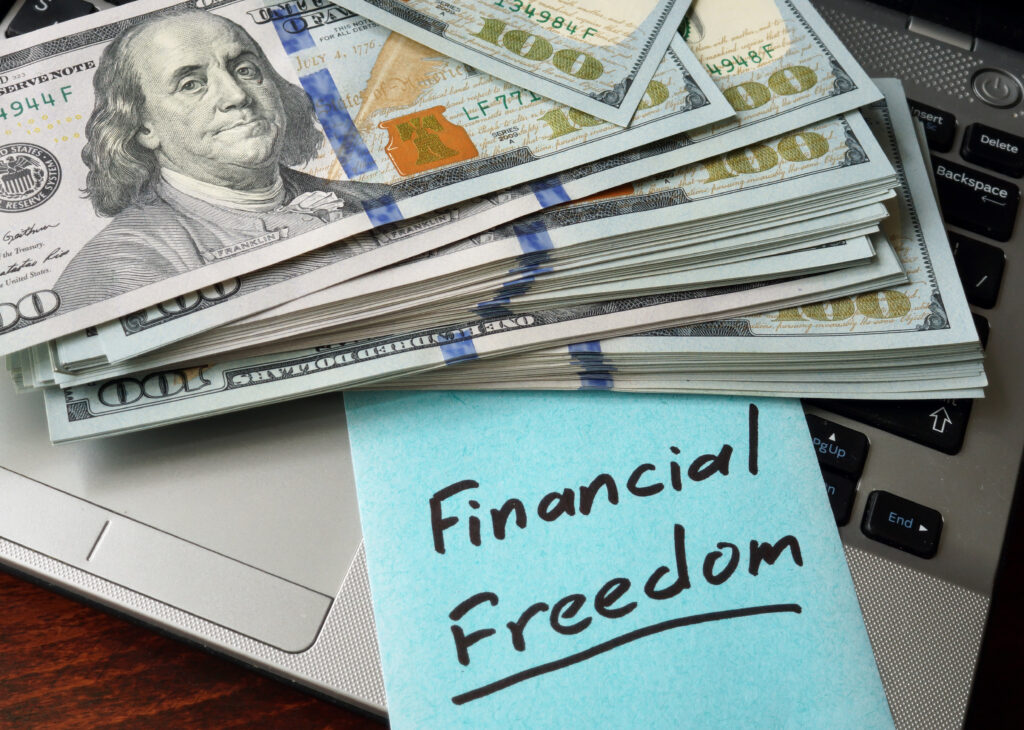
“Financial freedom” gets thrown around a lot—usually with images of yachts, luxury cars, or someone working from a beach with perfect Wi-Fi. But real financial freedom isn’t about being rich. It’s about having control over your money instead of your money controlling you.
Whether you dream of retiring early, quitting a job you hate, or simply not stressing about surprise expenses, financial freedom is possible—and it doesn’t require winning the lottery or launching the next big startup. It requires planning, discipline, and a shift in mindset.
Here’s what financial freedom actually means and how to start building it step by step.
What Is Financial Freedom, Really?
At its core, financial freedom means:
- You have enough money to cover your basic needs and lifestyle.
- You’re not living paycheck to paycheck.
- You’re not constantly worried about money.
- You have the ability to make choices—like changing jobs, taking time off, or retiring—without financial panic.
Financial freedom isn’t “one size fits all.” For one person, it might mean living debt-free with a steady income and some savings. For someone else, it might mean never needing to work again. The key is defining what freedom means for you.
Step 1: Know Where You Stand
Before you can plan for the future, get a clear picture of your present.
- List your income: Include your job, side hustles, benefits, and any other sources.
- Track your expenses: Look at what you’re actually spending—rent, groceries, subscriptions, debt payments, and yes, even that daily coffee.
- Calculate your net worth: Add up your assets (cash, savings, investments, property) and subtract your liabilities (debts, loans, credit cards).
This snapshot will show you what needs attention and what’s already working.
Step 2: Get Out of Debt (And Stay Out)
Debt is one of the biggest barriers to financial freedom. It limits your options, drains your paycheck, and adds stress.
- List all your debts: Include balances, interest rates, and minimum payments.
- Choose a payoff strategy:
- Debt snowball: Pay off the smallest debts first for quick wins.
- Debt avalanche: Pay off the highest-interest debts first to save the most money.
- Stop adding new debt: While you’re paying things off, avoid new credit cards or unnecessary financing.
Once you’re debt-free, commit to staying that way. Pay balances in full, avoid impulse purchases, and build habits that keep you in control.
Step 3: Build a Safety Net
Emergency savings are key to financial stability. Without a cushion, every unexpected expense becomes a crisis.
- Start with $500–$1,000: This is enough to handle minor emergencies like car repairs or medical bills.
- Aim for 3–6 months of expenses: This level of savings protects you in case of job loss or major emergencies.
- Keep it accessible but separate: Use a high-yield savings account that’s easy to access but not too easy to dip into.
Step 4: Create a Budget That Works for You
A budget isn’t about restriction—it’s about awareness. Knowing where your money goes helps you align your spending with your values.
- Use the 50/30/20 rule:
- 50% for needs (housing, bills, groceries)
- 30% for wants (fun, shopping, travel)
- 20% for savings and debt repayment
- Automate what you can: Schedule bill payments and savings transfers to happen automatically.
- Adjust as you go: Life changes. So should your budget.
Step 5: Start Investing Early (Even If It’s a Little)
You don’t need a ton of money to start investing—you just need time and consistency.
- Open a retirement account: A 401(k), IRA, or Roth IRA is a smart place to start.
- Contribute what you can: Even $25 or $50 a month adds up with compound interest.
- Invest for the long term: Focus on index funds or diversified portfolios and avoid chasing “get rich quick” trends.
The sooner you start, the more your money can grow on its own.
Step 6: Increase Your Income
Cutting expenses helps, but earning more can speed up your path to freedom.
- Ask for a raise or promotion: Know your value and back it up with results.
- Start a side hustle: Freelancing, tutoring, reselling, or offering a service can add extra income.
- Learn new skills: Investing in education or certifications can open the door to higher-paying opportunities.
More income means more options—and faster progress toward your goals.
Step 7: Set Clear Financial Goals
Financial freedom is easier to reach when you know what you’re aiming for.
- Set short-term goals: Pay off credit card debt, build a $1,000 emergency fund, etc.
- Set long-term goals: Buy a home, travel for a year, retire by 50.
- Track your progress: Seeing your wins (even the small ones) keeps you motivated.
Step 8: Design a Life That Matches Your Values
Financial freedom isn’t just about numbers. It’s about building a life that feels meaningful.
- Spend intentionally: Choose purchases that align with your values, not just trends or pressure.
- Avoid lifestyle creep: As your income increases, resist the urge to inflate your lifestyle.
- Plan for joy: Freedom doesn’t mean never spending—it means spending on what truly matters to you.
Final Thoughts
Financial freedom isn’t a fantasy—it’s a goal you can work toward no matter where you’re starting from. It’s about building habits, staying consistent, and making intentional choices with your money.
You don’t need to be perfect. You don’t need to have it all figured out. You just need to take the first step—and then keep going. Your version of financial freedom is waiting.
